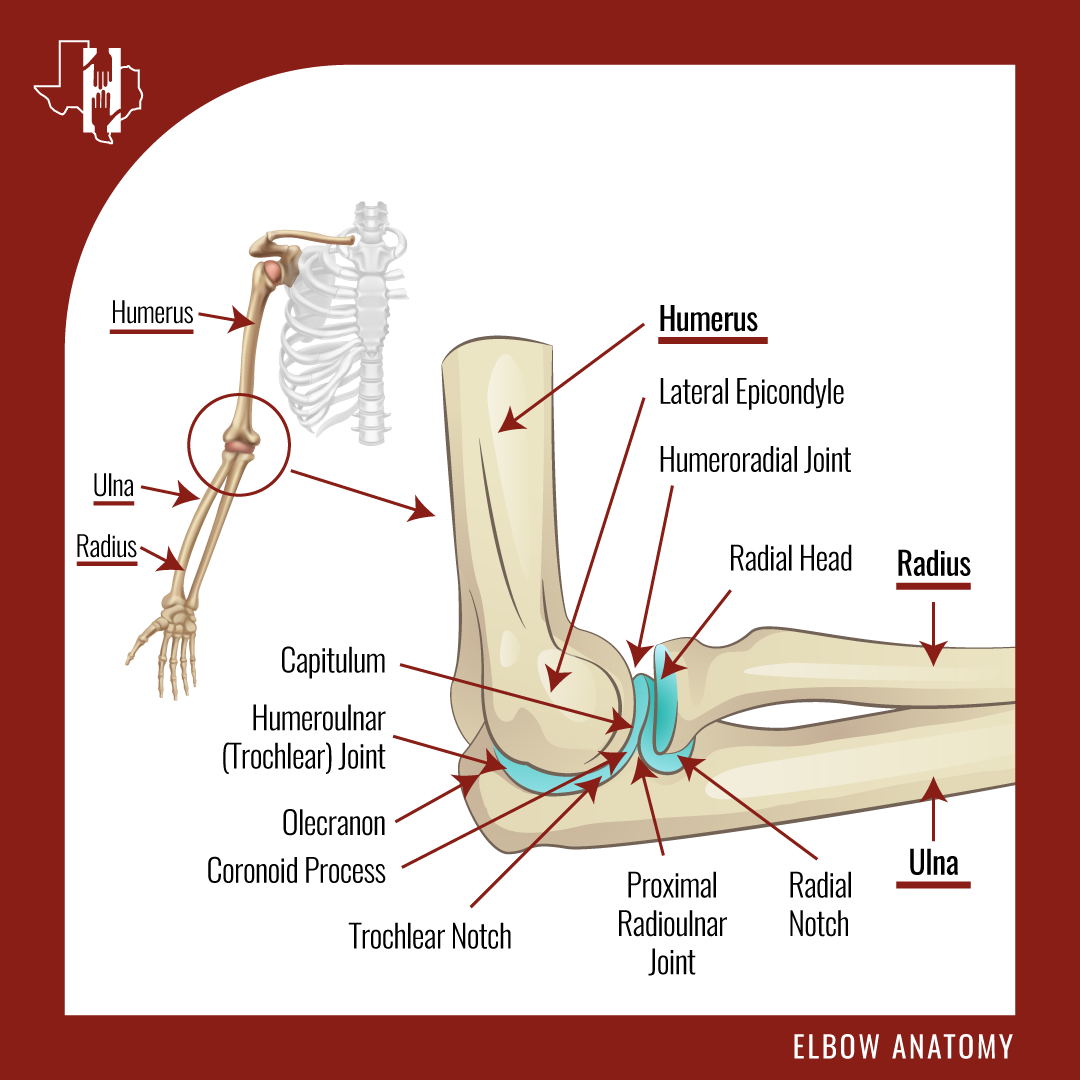How Do I Treat Tennis Elbow?
What is Tennis elbow? Tennis elbow (lateral epicondylitis) occurs when the tendons on the outer side of the elbow become inflamed. This condition is caused by overuse or repetitive strain on the forearm muscles and tendons. As a result, inflammation and pain result from the repeated stress on the tendon.
There are many treatment options available for Tennis Elbow, including pain relief, inflammation reduction, and tendon healing. Let's dive into this condition's common treatment options!
Elbow Anatomy
The Three Elbow Bones:
Humerus: The upper arm bone that forms the primary bone of the elbow joint.
Ulna: Located on the inner side of the arm (medial), the ulna is one of the two bones of the forearm.
Radius: Located on the outer side of the arm (lateral side), the radius is the other bone of the forearm.
Symptoms of tennis elbow
There are a number of symptoms associated with tennis elbow, including:
Joint Stiffness
Radiating Pain Down the Forearm
Tenderness
Weak Grip
Elbow Pain
Worsening Pain with Repetitive Motion
How is tennis elbow treated?
There is a wide range of treatment options available for tennis elbow, including conservative measures such as rest, pain management, and rehabilitation, as well as surgical options when necessary.
Let's take a look at a variety of treatment options, each aimed at regaining elbow function and getting back to active living.
NON-SURGICAL TREATMENTS
There are many non-surgical options available to alleviate elbow pain and in most cases, tennis elbow can be treated conservatively through these non-surgical methods. Among the most common non-surgical treatments are:
Apply ice regularly to the affected area to reduce inflammation and pain. You can apply a cold compress or ice pack for 15-20 minutes several times a day.
Inflammation and pain can be reduced with over-the-counter pain relievers, such as ibuprofen, aspirin, or naproxen.
Injured tendons should be rested and activity modified to prevent aggravating movements.
Using a brace or splint to support the affected area can help reduce strain on the tendons.
Physical therapy exercises and stretches to strengthen the forearm muscles and improve flexibility.
The use of corticosteroid injections may be recommended by a healthcare professional in some cases to relieve pain and reduce inflammation.
SURGICAL TREATMENTS
When non-surgical treatments fail to relieve elbow pain, you may consider surgery. Our Board-Certified Physicians can help you decide what procedure is best for your goals and needs if surgery is the best option. The following are some of the most common surgery procedures for tennis elbow:
Tendon Repair:
If the tendon is damaged or torn completely, the surgeon may have to repair or reattach it using sutures or anchors. This provides stability and improves the overall function of joints.
Arthroscopic Surgery:
In this minimally invasive procedure, damaged tissue is removed and tendons are repaired with a tiny camera and specialized instruments.
Open Release Surgery:
This surgery involves incisions over the lateral epicondyle and removal of damaged tendon attachment tissue.
Debridement:
The removal of degenerated or damaged tissue from the tendon promotes healing and reduces pain.
Elbow Tenotomy:
When tension and pain are present, the surgeon may choose to sever the affected tendon for relief.
It is essential to consult a doctor for a proper diagnosis and treatment of tennis elbow. If left untreated or improperly managed, it can lead to chronic pain.




